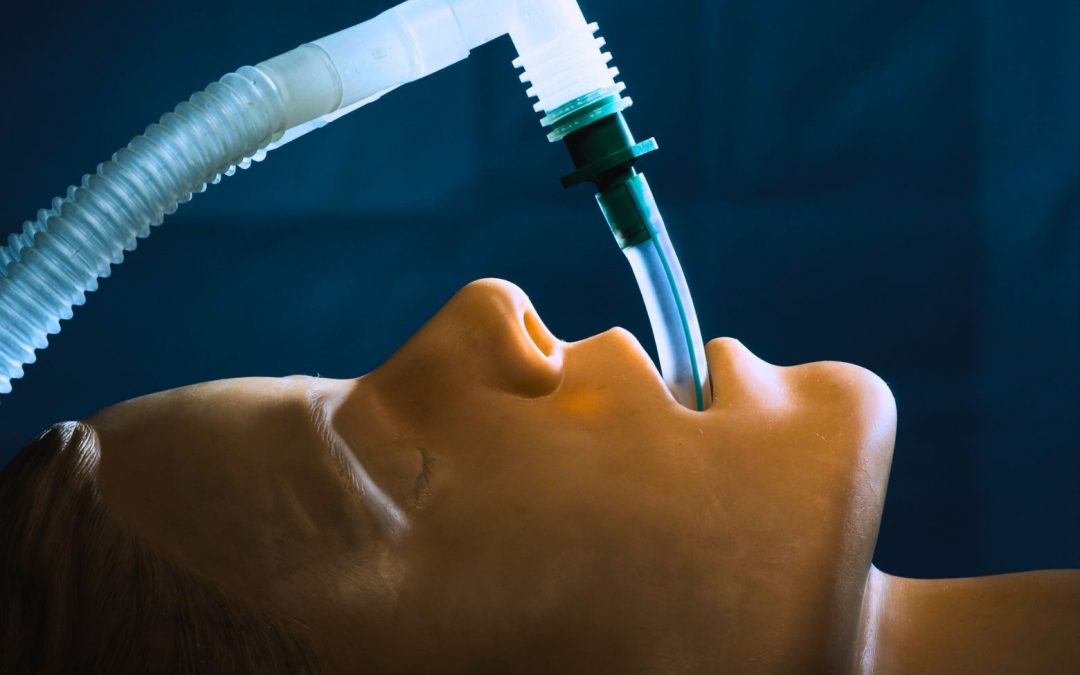Nursing Processes During Anaphylaxis
The nursing processes for anaphylaxis are:
Diagnosis
Outcomes
- Respiratory status: efficient gas exchange and ventilation
- Safety status: no physical injury
Interventions
- Airway insertion
- Airway management
- Airway suctioning
- Oral health promotion
- Respiratory monitoring
- Ventilation assistance
Implementation
- Discontinue the exposure to any antigen as soon as possible. You can also apply a tourniquet at the extremity with the antigen exposure to prevent its exposure to systemic circulation. However, do not let the tourniquet be in the same position for more than 30 minutes. Also, release it after every 5 minutes.
- Assess the patient’s breathing rate and pattern completely. If there is inadequacy, you might need to maintain mechanical ventilation and intubation with supplemental oxygen.
- In severe anaphylaxis reactions, maintain intravenous access and infusion of normal saline or lactated Ringer’s with supplemental oxygen therapy. You might also need to perform urinary catheterization to monitor urinary output during periods of instability.
Pharmacological Interventions
The pharmacological treatment for anaphylaxis includes:
Epinephrine
It is a catecholamine that helps decrease inflammation and allergic response. The dose varies according to the routes of administration. You can administer it through various routes such as intravenous, subcutaneous, intramuscular, sublingually, or down the endotracheal tube.
The subcutaneous dose is 0.3–0.5 mg of a 1:1,000
solution and repeated at 20-min intervals.
An intravenous drip may be used for protracted cases.
Diphenhydramine
Also known as Benadryl, is an antihistamine that helps stop the histamine release from mast cells. It helps release the symptoms of the skin and does not have any effect on systemic symptoms. Its dose is 25 to 50 mg intravenously.
Other medications include:
Hydrocortisone to reduce swelling
Aminophylline and inhaled beta-adrenergic agonists such as albuterol to reduce bronchospasm
Vasopressor agents such as norepinephrine or Levophed to treat hypotension
For patients taking beta-blockers, glucagon can help deal with cardiovascular effects.
As a nurse, the most important responsibility is to ensure the adequacy of the airway, breathing, and circulation for the patient. Intubation equipment should always be readily available for immediate use. If the patient has sufficient breathing but is at risk of airway occlusion, an oral or nasal airway should be inserted. Responsive patients should have nasal airways maintained, while unresponsive patients should have oral airways maintained.
When endotracheal intubation is necessary, the tube must be secured firmly, and the patient should be suctioned as needed to maintain the airway. If the patient has compromised circulation that does not respond to pharmacological intervention, cardiopulmonary resuscitation with chest compressions should be initiated.
Patient Teaching
If the patient got an anaphylaxis reaction, you need to give the following information to the patient and his caregivers:
- Teach the patient and family members to prevent future allergy attacks. Tell them the signs and symptoms of an anaphylaxis reaction. Inform them of the measures they should take when the patient is exposed to the allergen.
- Tell the patient that if they have any symptoms such as shortness of breath, difficulty swallowing, or the formation of a “lump in the throat” occurs, he should go to an emergency department immediately, without any delay.
- If an anaphylaxis reaction occurs due to any drug, make sure that the patient and his family members have the understanding to avoid its consumption in all future prescriptions. And not to consume the same drug in any over-the-counter or prescription medicine.
- Tell them to always tell the healthcare provider about the patient’s allergy history before any treatment or procedure.
- Teach them how to use the auto-injector epinephrine during an acute anaphylaxis attack.









